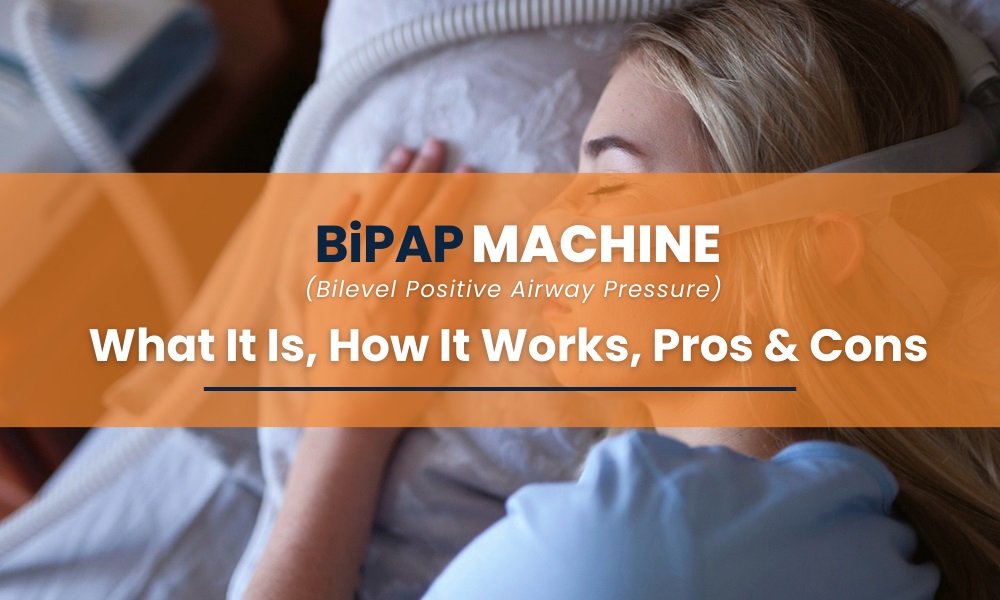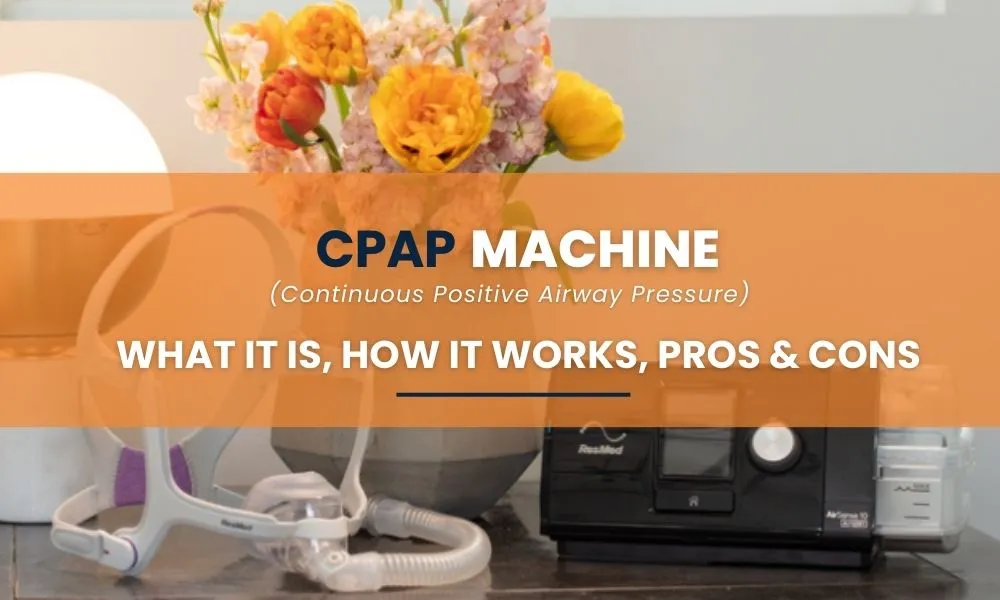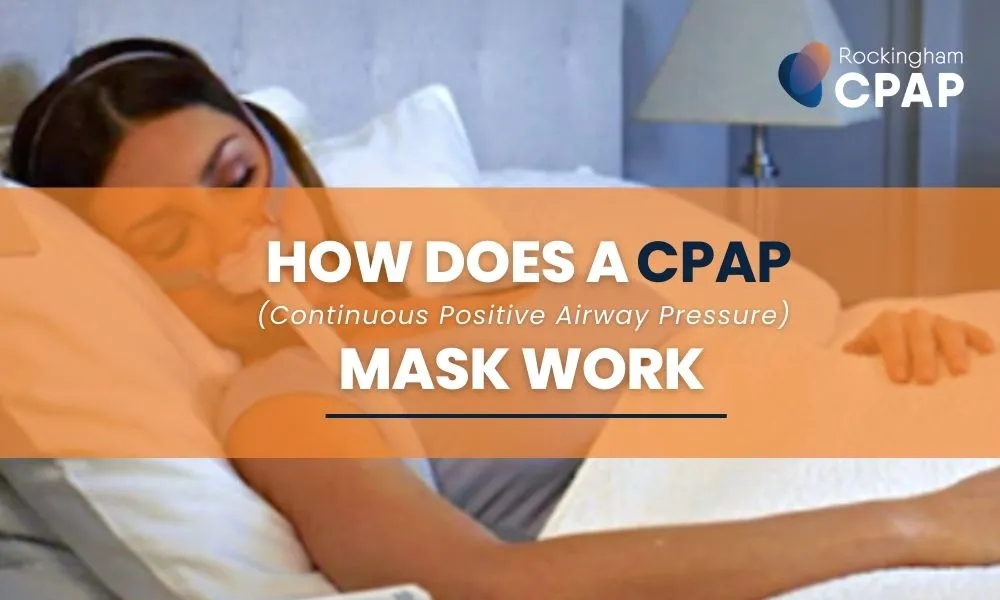
Breathing is a basic human function at the core of life. It’s an automatic action our bodies perform every single moment without a second thought. Yet, for some people, this seemingly effortless process can turn into a daily struggle due to conditions like sleep apnea. A BiPAP (Bilevel Positive Airway Pressure) machine can become their primary ally, restoring the ease of respiration, and inducing peaceful slumber every night.
So, what exactly does a BiPAP machine do? Simply put, it helps people with sleep apnea breathe more effortlessly and effectively during sleep. It’s like a breath of fresh air, quite literally, sent through a mask to keep the airway open.
The importance of understanding this medical equipment and its role in managing sleep apnea cannot be overstated. That’s why we bring you a comprehensive overview of the BiPAP machine. We’ll go through into its functionalities, the science behind it, and weigh its potential benefits and drawbacks.
Understanding BiPAP
BiPAP is a type of non-invasive ventilation therapy specifically designed to help people breathe more comfortably during sleep. It works by delivering pressurised air into the individual’s airways, thus ensuring they remain open and preventing the hindrance of airflow.
At the heart of BiPAP’s effectiveness is its ‘bilevel’ nature. Unlike other sleep aids, BiPAP machines use two pressure settings – one for inhalation (IPAP, Inspiratory Positive Airway Pressure) and a lower one for exhalation (EPAP, Expiratory Positive Airway Pressure). This alternating mechanism eases the entire breathing process, making it particularly beneficial for those who struggle with specific sleep disorders.
While there are many sleep-related difficulties that people face, two of the most common are obstructive sleep apnea (OSA) and central sleep apnea (CSA). OSA is characterised by the temporary cessation of breath due to physical blockages in the throat or upper airways. CSA, on the other hand, evolves from signals related problems between the brain and muscles that control breathing – the brain fails to send the right messages, leading to irregular breathing patterns.
Here’s where BiPAP steps in as a game-changer. By generating a flow of air at two different pressures, a BiPAP machine provides greater air pressure as you breathe in and reduces it as you breathe out. This facilitates effortless respiration during sleep, especially for OSA and CSA sufferers.
With proper use and under professional guidance, BiPAP machines can significantly improve the quality of breathing, and in turn, greatly enhance the quality of sleep and overall health.
How BiPAP Machines Work
BiPAP machines operate to improve the breathing experience for individuals dealing with sleep and respiratory disorders. To understand these devices’ inner workings, it’s essential to explore their key components and the specific functions they serve.
Components of a BiPAP Machine
- Airflow Generator: This unit houses the motor that generates and regulates the dual pressures of air delivered to the patient.
- Mask: The mask, which comes in different styles and sizes, is worn over the nose, mouth, or both, serving as the conduit to deliver pressurised air to the user.
- Tubing: Connecting the airflow generator to the mask, the tubing channels the air from device to the patient.
Mechanisms of Delivering Dual-Level Positive Airway Pressure
BiPAP machines rely on the dual pressure mechanism to ensure a comfortable and effective breathing pattern for the user. During inhalation, the motor delivers a higher level of pressure called Inspiratory Positive Airway Pressure (IPAP), opening the airways, and facilitating an uninterrupted airflow.
On the other hand, during exhalation, the motor adjusts the pressure level to a lower setting called Expiratory Positive Airway Pressure (EPAP). This prevents airway collapse while not exerting too much force, making it easier for the individual to exhale.
Maintaining Airway Patency and Addressing Different Respiratory Needs
The aim of a BiPAP machine is to maintain a stable and open airway passage throughout the user’s sleep process. By providing appropriate pressure levels during both inhalation and exhalation, the machine acknowledges the distinct respiratory needs of the individual with customization settings.
Customizable Pressure Settings for Inspiration and Expiration
One of the most significant advantages of using a BiPAP machine is the ability to customise the pressure settings catering to the specific patient’s requirements. Working in collaboration with a healthcare professional, the individual’s respiratory needs are assessed, and the suitable pressure settings are determined. As a result, this leads to a better-adjusted and more efficient breathing experience.
By understanding the components and their functions, individuals can maximise the potential benefits of BiPAP machines, ensuring they enjoy a restful and peaceful night’s sleep.
Advantages of Using a BiPAP Machine
The use of a BiPAP machine offers numerous advantages, particularly for individuals facing sleep and respiratory disorders. Here are some of the key benefits:
1. Effective Treatment for a Range of Sleep Disorders
For individuals with obstructive sleep apnea (OSA), central sleep apnea (CSA), or similar disorders, BiPAP machines offer an effective treatment strategy. By consistently maintaining open airways and facilitating easy breathing, these machines play a crucial role in managing otherwise detrimental sleep disorders.
2. Enhanced Comfort and Adaptability for Patients with Variable Pressure Needs
BiPAP machines’ bilevel pressure allows for personalised treatment, fulfilling the unique needs of each user. The higher-pressure during inhalation aids in a fuller intake of air, while the lower exhalation pressure mitigates the feeling of forceful breathing out. Such adaptability leads to enhanced comfort during the user’s sleep.
3. Reduction of Health Risks Associated with Untreated Sleep Disorders
Insufficient or disrupted sleep can contribute to a host of health issues, including hypertension, heart disease, stroke, and diabetes. By treating sleep disorders effectively, BiPAP machines can help reduce the likelihood of developing these associated health risks.
4. Reduced Likelihood of Pressure-Related Discomfort
With the option of two distinct pressures for inhalation and exhalation, a BiPAP machine can massively reduce pressure-related discomfort. Unlike continuous positive airway pressure (CPAP) therapy, where some users might find it hard to exhale against a single, continuous pressure, BiPAP technology overcomes this hurdle by offering a reduced pressure during exhalation.
A BiPAP machine isn’t just an effective strategy for dealing with various sleep disorders, it also augments the user’s overall comfort, detailing a more pleasurable sleep experience.
Potential Drawbacks and Limitations
While BiPAP machines have proven to be beneficial in numerous instances, there are some potential drawbacks and limitations to consider. Here are some of the challenges that might arise when using a BiPAP machine:
1. Cost Compared to CPAP Machines
BiPAP machines typically come with a higher price tag than their CPAP counterparts. The added features and flexibility of bilevel pressure settings result in a consequential spike in cost, which can be a potential barrier for those with budget constraints.
2. Complexity of Use and Setup
BiPAP machines can be more complex to use due to their customizable pressure settings and advanced features. New users might initially find the setup process and adjustment phase to be more complicated compared to simpler CPAP machines. It’s important to consult healthcare professionals and follow the manufacturer’s instructions to familiarise oneself with the device.
3. Noise and Sound Levels
Although BiPAP machines have evolved over time to reduce their overall noise levels, some users may still find the sound emitted during operation to be a source of disturbance. The noise level can vary based on the make and model purchased. It is worth researching and investing in a quiet device to ensure minimal interference during sleep.
4. Travel and Portability Considerations
BiPAP machines, like other sleep apnea treatment devices, can pose challenges when it comes to travel and portability. While manufacturers strive to design more compact and travel-friendly options, finding the perfect balance between performance, weight, and size can be a tricky affair. Always confirm that your chosen BiPAP machine meets the criteria for medical equipment on airlines if you plan to travel.
While BiPAP machines undoubtedly offer remarkable benefits, users must also consider the potential drawbacks and limitations before choosing one. Ensuring a comprehensive understanding of their financial constraints, specific requirements, and compatibility with a particular device will make the most informed decision possible.
Choosing the Right BiPAP Machine
Finding the most suitable BiPAP machine calls for a comprehensive assessment of the individual’s specific needs and demands. Here are the key factors to consider when making a choice:
Factors to Consider when Selecting a BiPAP Machine
- Prescription: Your healthcare provider or specialist will provide a prescription detailing the required pressure setting you need. This is fundamental to ensuring that the machine selected can deliver the necessary pressure.
- Machine type: BiPAP machines come in different models with varying features. Some advanced models offer built-in humidifiers, while others might focus on quieter operation or be more compact for travel purposes.
Consulting with a Sleep Specialist or Healthcare Provider
It’s important to consult with a sleep specialist or healthcare provider in choosing the right BiPAP machine. They will guide you based on your diagnosis, lifestyle, and unique requirements. Leverage their knowledge and experience to ensure you choose a machine that aligns with your treatment plan and comfort levels.
Finding the Most Suitable BiPAP Machine for Individual Needs
Every individual has unique needs and preferences, and finding a machine that best caters to your requirements will enhance your treatment’s effectiveness. Therefore, while you should consider the cost, also keep in mind the machine’s quality, its features, and their alignment with your lifestyle and sleeping habits. Reach out to users that possess similar needs and ask for their feedback on various machines and consider product reviews and ratings.
Choosing the right BiPAP machine is a holistic process that includes recognizing your own sleep needs, consulting with a medical professional, exploring machine options, and making a decision that balances cost-effectiveness with optimal treatment outcomes.
Embrace Restful Nights with Rockingham CPAP!
Having trouble sleeping due to sleep-related disorders? Looking for a CPAP machine that’s perfect for your needs? Don’t stress it – Rockingham CPAP is here to help!
We not only provide you with the best quality machines but also guide you through the process of selecting a suitable device considering your unique sleep needs. We understand that restful sleep is priceless, and that’s why we are dedicated to delivering not just products, but solutions advocating comfort, quality, and effective treatment results.
Choose Rockingham CPAP – your partner for peaceful nights and energetic days! Contact us today to start your journey towards better sleep.


